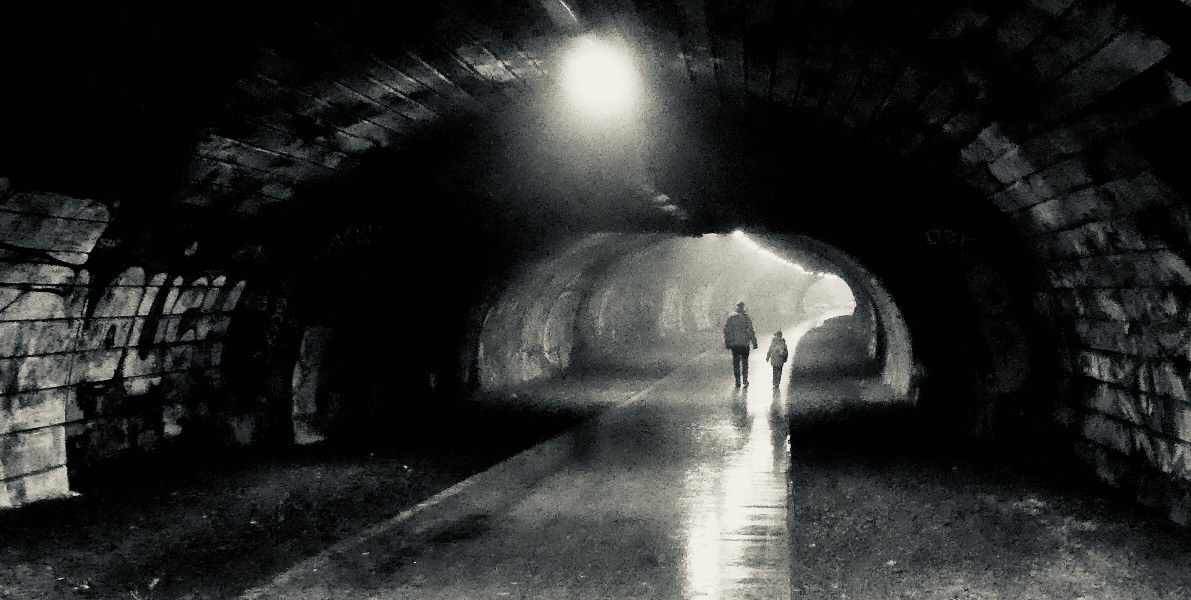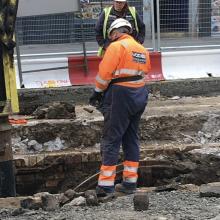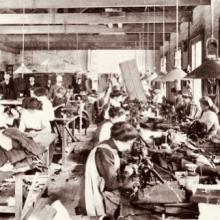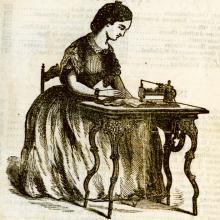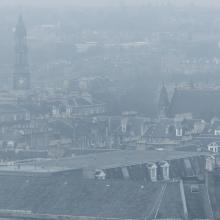
This morning we woke to a third day of miserable damp gloom.
It may seem grim. But Edinburgh has known worse.
The following article is extracted from a longer piece published in the Scotsman on 16 November 1929 – the day after weather conditions had combined with smoke from coal fires to spectacular effect.
__________________
EDINBURGH’S BLANKET.
Confusion in the Streets.
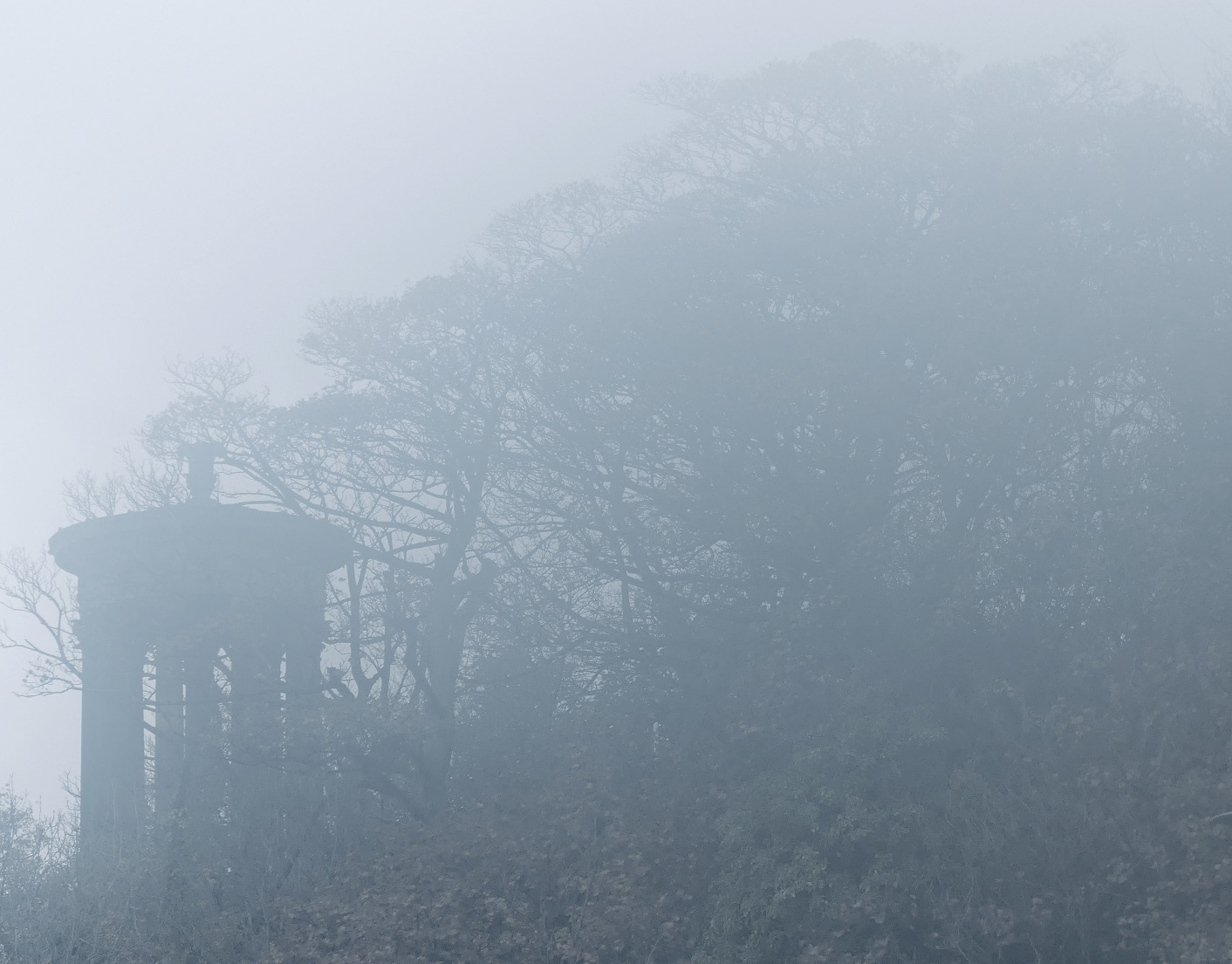
Edinburgh, in common with a large part of England and Scotland, had to face a very bad fog yesterday. Even a Londoner would have admitted that, as fogs go, it was really thick. Opinions differed as to how it compared with the fog of two or three years ago, but on the whole it seemed to be worse, and transport in and around the city, by tram, bus, motor car, or train, was seriously interfered with, and in some cases almost entirely disorganised.
The fog began to go beyond a joke round about four o’clock in the afternoon. An hour before that, however, it could be seen developing from the Calton Hill. A cloud, dark against the sun but white in the north, blotted out the streets and buildings, and, from the top of the Hill, all that could be seen was a vast expanse of material which looked like cotton wool, with the tops of steeples and chimney stacks jutting out from it between the centre of the town and Leith, while on the south side Arthur’s Seat raised its leonine head above the mists. At that time, however, the streets were still reasonable, and it was not until four o’clock and afterwards that tramway drivers and bus drivers and private motorists and everybody in general began to feel lost and helpless.
The fog began to thicken on the seaward parts of the city. At two o’clock in the afternoon tramcars had to go slowly between Portobello and Abbeyhill, but by half-past five movement was almost impossible, and a string of thirty or forty tramcars wove held up between Meadowbank and Abbey Church. Traffic of all kinds was disorganised.
Visibility was reduced to a matter of three or four yards and even less. A motor bus, losing its way in London Road, missed the street and collided with the wall. Motor cars bumped up against other motor cars, and got entangled between tramcars. The air echoed to the clanging of bells and the shouting of instructions. Those of Edinburgh’s citizens who live in Portobello and the eastern part of the town walked home to save time.
DRIFTING BANKS.
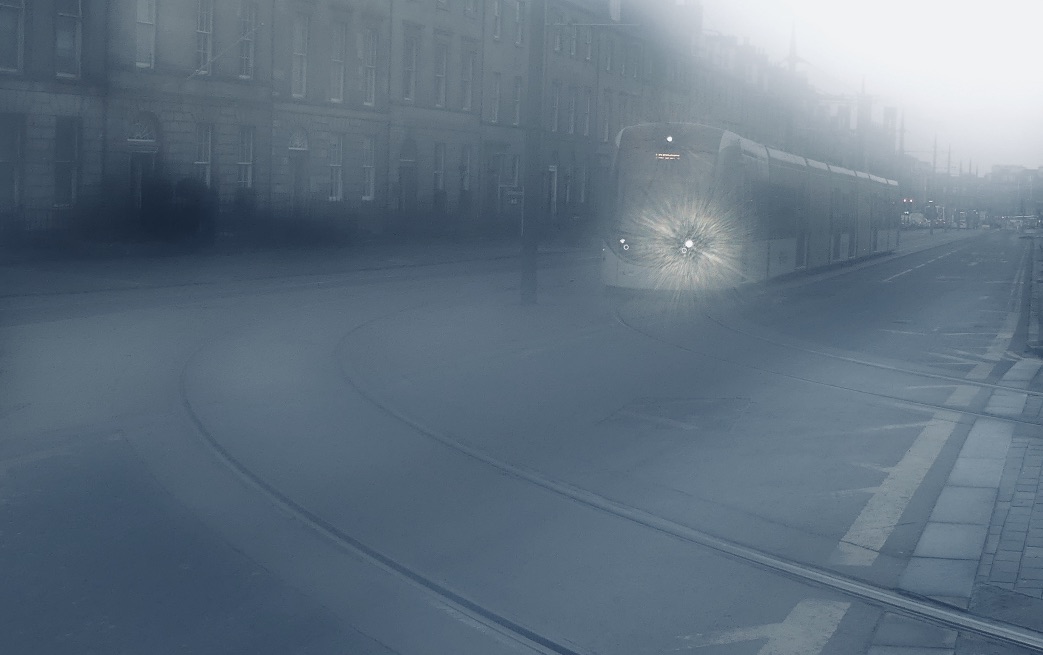
The state of affairs in different districts changed very rapidly in short periods as the fog-banks drifted. At six o’clock or so it was impossible to see the lights of Princes Street from North Bridge, Half an hour later it was impossible to see one side of North Bridge from the other, and ordinary law-abiding citizens of retiring dispositions suddenly found themselves facing high adventure in the simple process of crossing the street—a process which took more than a little courage and required a nice sense of direction.
People who had never entered for the examinations which are set to navigating officers in the Navy were forced to become navigating officers on their own account, ploughing uncharted seas, as it were, in making their way from one side of the foot of the Mound to the other.
As an instance of how the fog was localised, it may be remarked that while traffic was crawling along North Bridge at a snail’s pace—about half past six—tramcars could dash wildly along a clear patch of a hundred yards or so at the junction of Waterloo Place and Regent Terrace. The moon, at the same time, was clearly visible to people in the Bruntsfield district, and also to people in the low-lying district round about the Corporation housing scheme at Northfield, which was almost clear of fog, while tramcars on the Portobello Road, quarter of a mile away, were crawling.
Conductors of cars and buses on the Portobello Road walked in front of their vehicles all the way from Regent Terrace to Portobello. The Corporation enlisted the services of a considerable number of drivers and conductors who would normally have been off duty, and these men, provided in many cases with electric torches, walked in front of cars and buses, guiding the drivers.
CONDUCTOR’S ESCAPE.
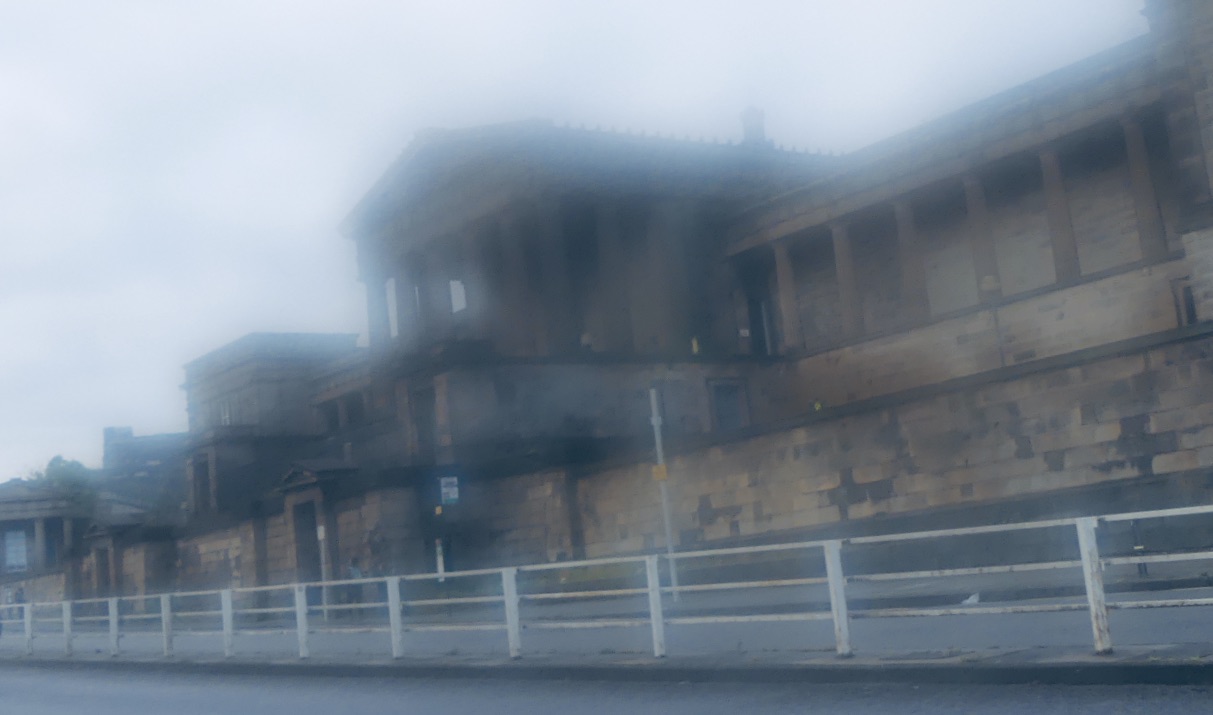
In Regent Road a conductor had a narrow escape from serious injury. Running in front of a tramcar bound for Portobello, with the intention of guiding the driver, he slipped on the frozen street and fell in front of the vehicle. The car just pulled up when the guard was a matter of four feet off the fallen man.
At this time—seven o’clock in the evening—it was literally impossible to see the street from the top deck of a tramcar, and the 300 yards’ distance between Meadowbank and Willowbrae Road was a ten minutes’ journey. At eight o’clock in the evening nothing was easier, to a pedestrian in the Portobello district, than losing one’s way. One had to hug the kerbside.
What made the fog particularly unpleasant was that it was accompanied by ground frost and was intensely cold. At nine o’clock the centre parts of the town cleared for some considerable time. Thick banks, however, still persisted, and while North Bridge was navigable Fountainbridge was still a dangerous area.
PRINCES STREET UNDER A PALL
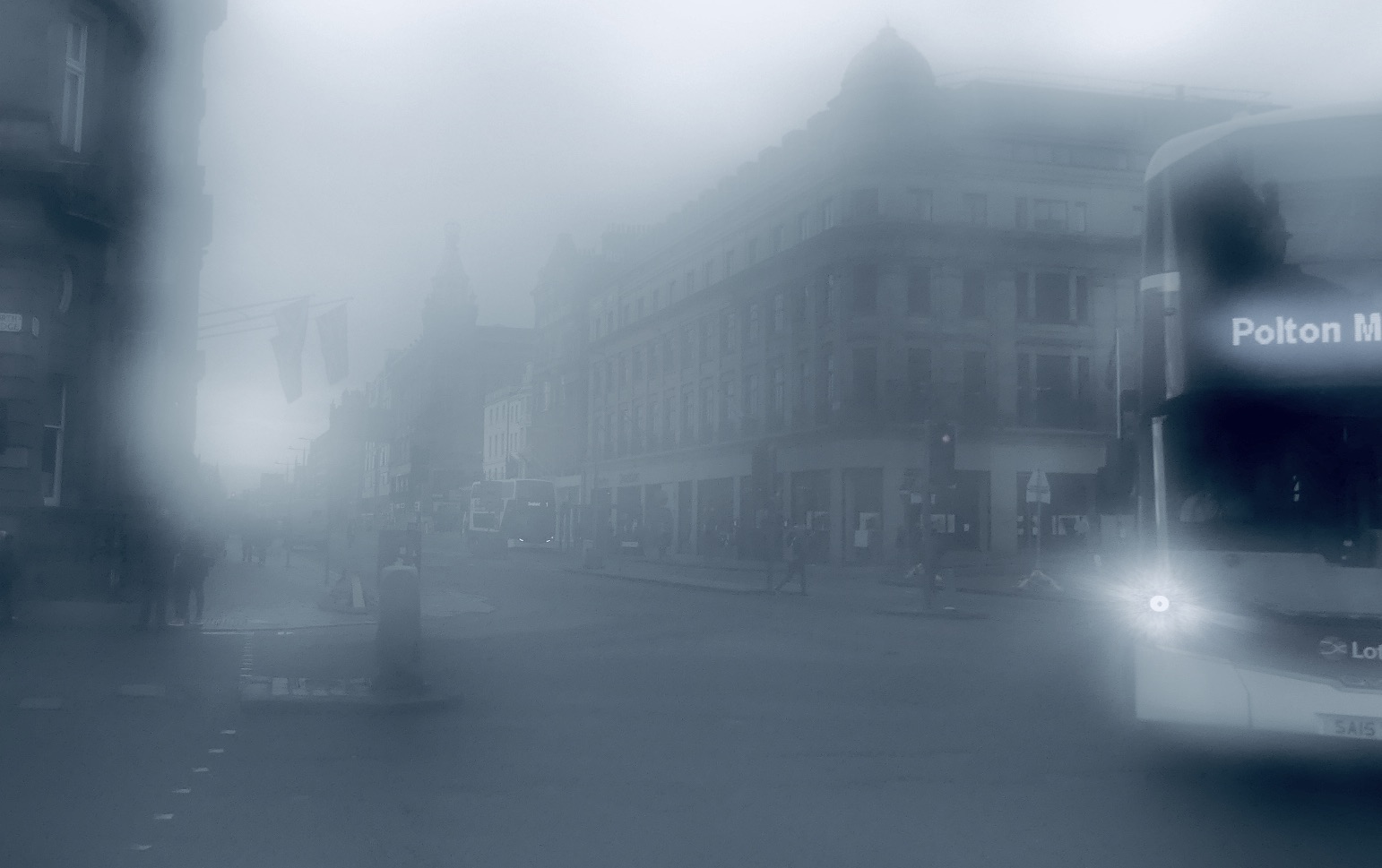
Princes Street has many phases. That which practically blotted it out yesterday evening is fortunately a rare one. Usually one of its busiest periods is about six o’clock. Those who took part in the great human drift, east or west, last night missed the romantic distances with their twinkling lights.
Those on foot on the promenade seemed to be members of a little company moving together through a brown void, always in process of being passed by another company of wayfarers in the desert who emerged from the darkness a few yards ahead, and in a few moments disappeared into the darkness behind. The Castle had disappeared. Of the long rows of twin electric lights, usually visible in a distant vista, only three pairs could be seen at one time from any point in the promenade. Two-storey rows of dim lights moved along with a majestic deliberation. These were tramcars. Long horizontal shafts of light moved more swiftly along in a ghostly silence. Those indicated motor cars. The familiar architecture, east and west, had entirely disappeared. Only the lighted shop windows gave the line of march.
There were a large number of minor collisions between trams and between trams and motor vehicles, but fortunately no serious injury was reported as a result of these. The tramway timetables, between four o’clock and nine, were disorganised on the seaward routes. About seven o’clock the driver of a bus in the neighbourhood of Duddingston Park rang up the Corporation offices and reported that he was unable to proceed until the fog lifted; he was helpless, faced by a solid blanket of fog. The buses, not having rails to guide them, had an even worse time than the tramcars.
The authorities were quick in facing the problem. On bad routes, such as the Portobello Road, the points-duty policemen were equipped with electric torches when the fog began to thicken, and at crossings such as the Mound squads of men were out on duty to control the traffic. Flares were placed at junctions and termini. Buses proceeding between Edinburgh and Bathgate had difficulties. It was reported that a bus was badly damaged at Middle Norton, on the Glasgow Road, and another was disabled outside Polmont.
Train services were delayed. The London and North-Eastern Company and the London Midland and Scottish Company reported delays in arrivals of trains at Edinburgh of from ten to forty minutes. In the late evening the fog appeared to have drifted westwards, and trains in the west were slowed down more than they had been earlier. By midnight the eastern part of the town was entirely clear of fog.
STREET MISHAPS.
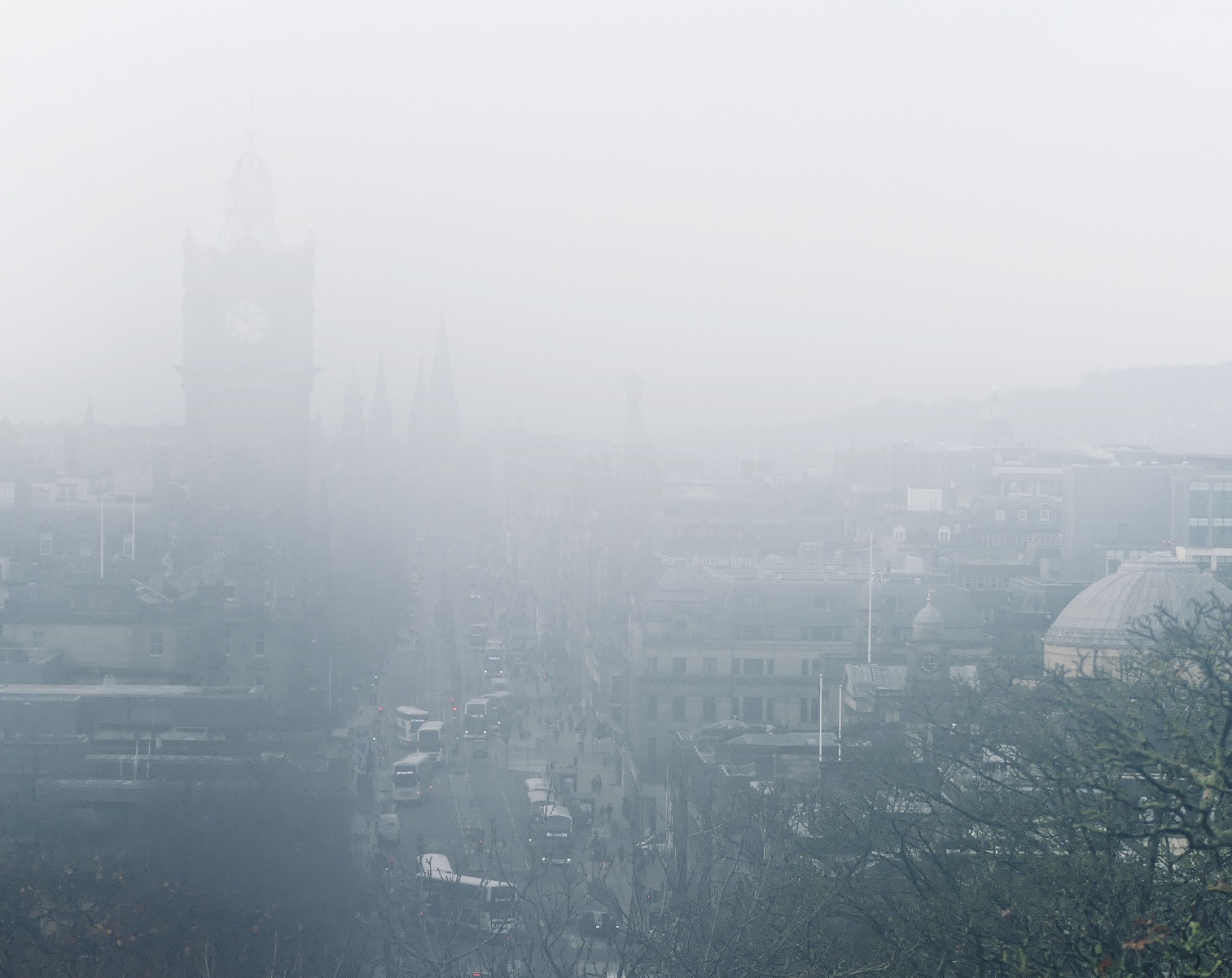
A number of mishaps in which motor cars and tramcars were involved during the worst of the fog were reported to Edinburgh police. About a quarter-past five a west-going tramcar in London Road collided with another tramcar proceeding in the same direction. The damage was slight. Between 5 and 6 o’clock a tramcar collided with two motor cars in Seafield Road, near the Marine Gardens. The fog was particularly troublesome near the shores of the Forth. Some panes of glass in the tramcar were smashed.
Shortly before five o’clock two motor cars wero in collision in Colinton Road at the corner of Abbotsford Crescent, both cars being damaged. In Perth Street a motor car hacked into a lamp-post, and in George Street, about a quarter to eight, a motor lorry skidded on the slippery street and collided with a stationary motor car. The rear of the car was damaged.
EERIE EFFECTS IN LEITH.

In Leith it was impossible at times to see halfway across the wider street, and pedestrians who had occasion to cross looked fearfully in every direction before making a dash into the gloom. Even the brightly lit tramway cars and the usually too bright head-lights of motor cars were sometimes invisible at a distance of a few yards.
Out of the impenetrable barrier of fog the vehicles would with quite startling suddenness come into view and in a moment they were again out of sight. The effect was not only eerie, but very disturbing, for to the pedestrian with an average speed it seemed that the chances of getting home safely, if many streets had to be crossed, were not very bright.
Drivers of all vehicles had to proceed with the greatest possible caution, and progress through the port was exceedingly slow. Though keeping a sharp look-out, and moving at little more-than walking pace, drivers found it was difficult at some points to avoid even the tramway platforms.
DRIVERS’ DIFFICULTIES.
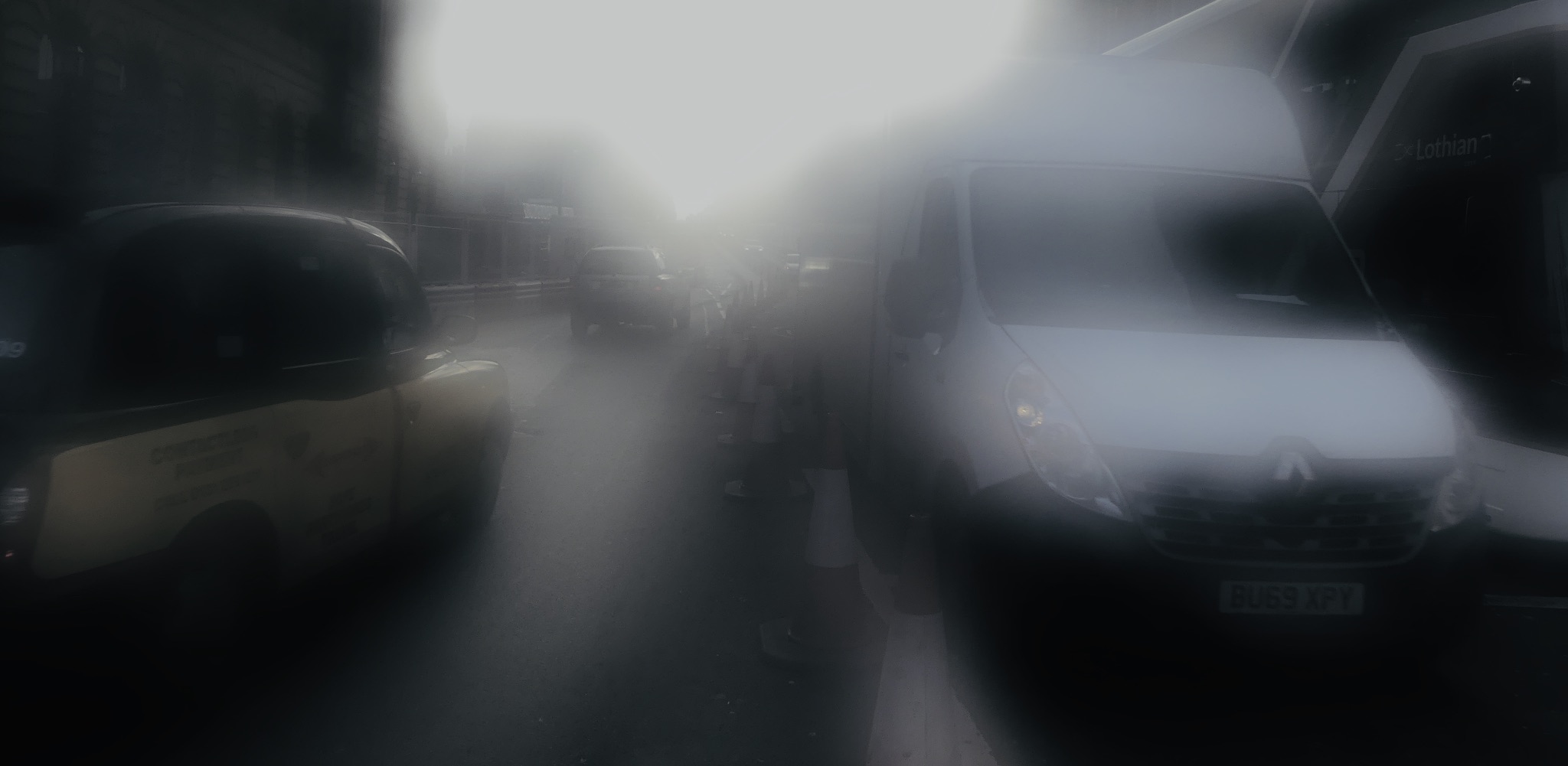
At Pilrig about 7 o’clock a large motor van was within about foot feet of the platform before the man in charge distinguished the red lights, and he had some trouble in swinging the vehicle clear.
In many other parts drivers must have had the same sort of experience. It was noticed that in a large number of motor cars the passenger sat beside the chauffeur, and all the time looked out from the side, straining the eyes in an effort to penetrate the blackness ahead.
On tramway cars drivers and conductors’ were assisted in the keeping of a look-out by those tramway men who happened to be on the way home or to the depot. In the outskirts of the town, where there were fewer lights, the difficulties were increased, and car passengers frequently passed the stations at which they had intended to alight.
DANGERS ON THE FORTH.
On the Firth of Forth conditions were dangerous. The estuary was enveloped in the murky gloom, and there was great difficulty in bringing vessels in and out of harbours. Even within the docks movement was risky. At Leith, however, despite the fogs, ships arrived and sailed well up to time, only one vessel, a coaster bound to Leith, having to remain in the roads.
Ships had much trouble finding their way into Granton Harbour, and two trawlers, the John Duncan and the James Aldridge, belonging to a Glasgow owner, ran on to the east side of the breakwater. They refloated, however, with the rising tide, and proceeded safely into the harbour. There was some delay before the ferry steamer, William Muir, could be got to her moorings.
It was reported that at Inchkeith a trawler went aground, but that it also got off later in the night.
MUSSELBURGH BOAT ASHORE.
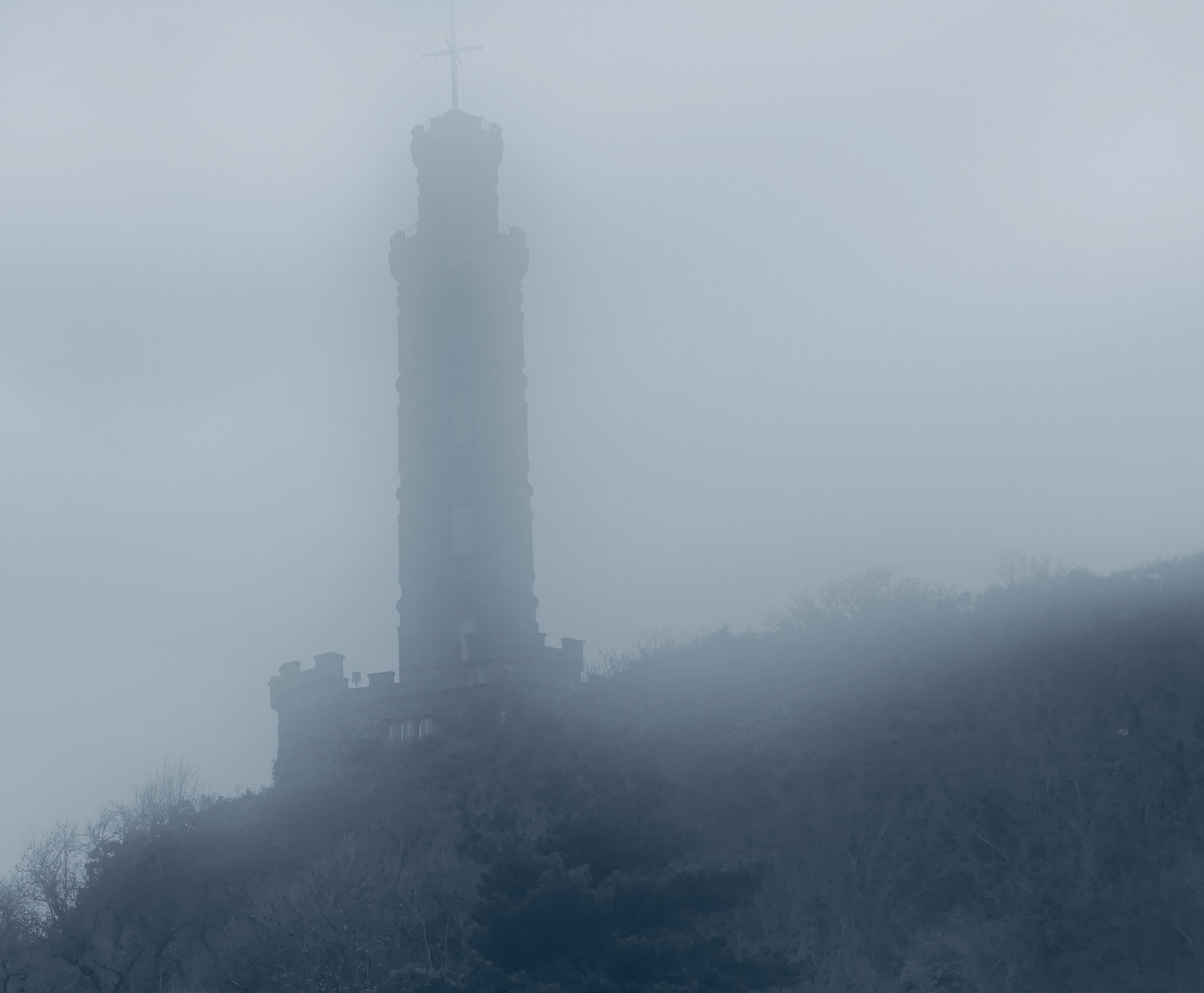
While the fog was shrouding the inshore waters of the Firth of Forth yesterday afternoon, a Musselburgh fishing-boat, owned by James Langlands, ran on to the rocks at Joppa, grounded, and was left by the ebbing tide. Her crew remained aboard, and the damage to the craft will not be ascertained till the weather clears.
Another of the boats got among the rocks, but the skipper, Daniel Livingston, was able to back her out to safety.
Musselburgh escaped the fog till well on in the afternoon, but Musselburgh bus passengers to Edinburgh did not, and were plunged suddenly into the gloom at the railway bridge at Baileyfield Road. Thence to Abbeymount it was hardly possible to see the sides of the road from a travelling bus. Regent Road was not too bad.
In the evening, a trip by motor bus after five o clock was something of an adventure. Normally the trip takes about twenty minutes. A correspondent travelled on a bus which occupied over an hour and ten minutes on the journey. For nearly two miles the conductor walked in front, looking for the car lines as a guide for the driver.
This bus was crowded to the standing up of passengers, and these were amused by the dialogue between the driver and the conductor which went on from time to time. ‘I canna see the tram lines,’ said the conductor. ‘I canna see you,’ answered the driver. There was a pause, and then the driver’s voice boomed out again—‘I canna. see naething.’ This particular bus, the driver of which was hugging the left side of the road, twice mounted the pavement.
Musselburgh itself was at no time so encumbered by the fog as further west, and a watery-looking moon was visible in the evening.
